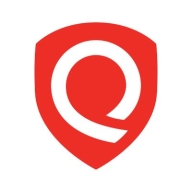

Qualys and GitGuardian compete in the web application security and secret detection sectors, respectively. GitGuardian seems to have the upper hand with its specialized focus on detecting secrets and proactive incident management.
Features: Qualys Web Application Scanning provides automation tools, effective vulnerability scanning, and strong integration with DevOps environments. It is valued for its comprehensive reporting and low false-positive rates. GitGuardian excels in detecting secrets and security breaches with broad detection capabilities, offering proactive alerts for immediate incident response and quick feedback loops.
Room for Improvement: Qualys users seek improved zero-day patching, better reporting, and a more intuitive interface. They also request flexible pricing structures and enhanced false-positive handling. GitGuardian users desire increased integrative capabilities, customized detectors, and more automated user onboarding processes.
Ease of Deployment and Customer Service: Qualys allows versatile deployment across hybrid, private, and public clouds and offers comprehensive support, though some users suggest improvements in customer relationship management. GitGuardian focuses primarily on the cloud with ease of integration and use. While its technical support is generally adequate, some users recommend enhancing client support and self-service options.
Pricing and ROI: Qualys is viewed as expensive but competitive with potential negotiation benefits for institutional buyers, showing positive ROI due to its automation and scalability. GitGuardian's pricing is considered fair but can be high for large teams; however, its investment in secret detection offers strong ROI driven by unique features and comprehensive protection.
I can certainly say that we have saved significant time and resources in terms of people and automation.
The majority of our incidents for critical detectors and important secret types are remediated automatically or proactively by developers through GitGuardian's notification system, without security team involvement.
It effectively helps us with credentials security and has been performing satisfactorily.
I would rate their technical support a nine out of ten.
I would rate the technical support as excellent.
They have various options in the vulnerability management process, and when we initially bought our license, we didn't realize we needed PCI for better results, which isn't included in the default configurations.
Once we purchase the license, we have access to top-notch support.
I have dealt with Qualys's technical support, and any enhancements are challenging.
In terms of scalability, I would rate it around a ten out of ten, as it handles all the repositories and commit activity we have.
I would rate it a ten out of ten for scalability.
Currently, what GitGuardian Platform is doing works effectively.
My concern remains the lack of deep dive analysis and that it produces similar vulnerability results as other tools such as Nessus based on version checks instead of real impact checks.
It is licensed for assets, so we just contact the team for additional licenses if needed.
At one point, there was a limitation on reporting for 100,000 assets at a time.
We set up a lot of the repository, so GitGuardian is a required check.
The SaaS platform has experienced two significant moments of downtime or instability in the last six months, requiring notices and retrospectives.
I would rate the stability of the GitGuardian Platform as excellent with no downtimes.
Another thing that would be good to see is some more metrics on the usage of the GitGuardian pre-push hooks.
The self-healing activity by developers isn't reflected in the analytics, requiring us to collect this data ourselves.
We are looking for better metrics and audit data, wanting more features such as knowing which users are creating the most secrets or committing the most secrets, what repository, what directory, and who is not checking in secrets.
With the growing reliance on AI, Qualys Web Application Scanning should be updated to handle AI-based applications and LLM-based attacks.
Qualys Web Application Scanning does IP-level testing, requiring direct input of credentials, and can only scan a few pages to provide known generic vulnerabilities.
I would like it to be cheaper because it is a bit expensive compared to competitors like Tenable Nessus.
Overall, the secret detection sector is expensive, but we are happy with the value we get.
It's fairly priced, as it performs a lot of analysis and is a valuable tool.
They offer discounts on bulk licenses, making it cheaper compared to competitors like Veracode DAST.
I find it a bit expensive compared to other competitors.
Regarding pricing, I think for personal use, it is costly, but if organizations are ready to pay, then it is fine as they are using it.
One of the best features of the solution is the ability to use pre-push hooks.
A high number of our exposures are remediated by developers before security needs to step in, as the self-healing playbook process engages them automatically.
GitGuardian Platform performs the capability to detect secrets in real time exceptionally, as it activates from the commit and can detect it immediately.
It effectively detects vulnerabilities like the OWASP Top 10 without any issues in reporting.
Credential scanning is very effective because it goes in-depth into the system, crawling the pages, and reporting on vulnerabilities.
Qualys Web Application Scanning is accurate and provides minimal false positives.
| Product | Market Share (%) |
|---|---|
| GitGuardian Platform | 0.9% |
| Qualys Web Application Scanning | 2.0% |
| Other | 97.1% |


| Company Size | Count |
|---|---|
| Small Business | 10 |
| Midsize Enterprise | 9 |
| Large Enterprise | 13 |
| Company Size | Count |
|---|---|
| Small Business | 8 |
| Midsize Enterprise | 6 |
| Large Enterprise | 27 |
GitGuardian is an advanced secrets security platform that strengthens Non-Human Identity security and ensures compliance with industry standards by detecting and managing secrets in development environments.
GitGuardian integrates Secrets Security and Secrets Observability, facilitating the detection of compromised secrets and managing legitimate secrets' lifecycle. Supporting over 450 types of secrets, the platform offers public monitoring for leaked data and employs honeytokens as an added defense. Trusted by over 600,000 developers, organizations such as Snowflake and ING rely on GitGuardian for robust secrets protection.
What features define GitGuardian?
What are the key benefits when evaluating GitGuardian?
In sectors like healthcare and telecommunications, GitGuardian is implemented for detecting and managing the exposure of sensitive information in code repositories. Teams benefit from its ability to integrate with platforms such as GitHub, allowing for immediate alerts and efficient remediation of security risks, enhancing application security by safeguarding operational environments.
Qualys Web Application Scanning (WAS) is a fully cloud-based web application security scanner. The scanner will automatically crawl periodically and test web applications to discover potential vulnerabilities, including cross-site scripting (XSS) and SQL injection. The consistent testing equips the automated service to generate consistent results, lessen false positives, and offer the ability to scale to protect thousands of websites effortlessly.
Qualys Web Application Scanning is bundled with different scanning technology to carefully scan websites for malware infections and will send notifications to website owners to assist in preventing blacklisting and brand reputation damage. As digital transformation takes place in various organizations, Qualys WAS gives organizations the ability to track and document their web app security status through its interactive reporting capabilities.
Qualys WAS empowers organizations to remediate any web application vulnerabilities quickly. Some of the key tools offered are:
Benefits of Qualys Web Application Scanning
Qualys Web Application Scanning offers many benefits, including:
Reviews from Real Users
Qualys Web Application Scanning stands out among its competitors for a variety of reasons. Two of those reasons are its progressive scan and quick detection of vulnerabilities.
P.K., a senior software developer at a tech vendor, writes, "The feature that I have found most valuable is the progressive scan. It is good. It's done in 24 hours."
Nagaraj S., lead cybersecurity engineer at a tech service company, notes, "I have found the detection of vulnerabilities tool thorough with good results and the graphical display output to be wonderful and full of colors. It allows many types of outputs, such as bar and chart previews."
We monitor all Application Security Tools reviews to prevent fraudulent reviews and keep review quality high. We do not post reviews by company employees or direct competitors. We validate each review for authenticity via cross-reference with LinkedIn, and personal follow-up with the reviewer when necessary.